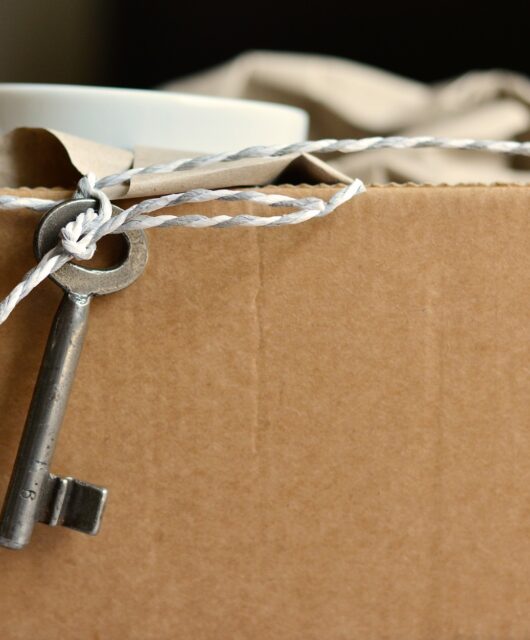Water Not Allowed: Steps for Repairing a Leaking Roof Yourself
 Believe it or not, the average roof lasts for only 20 years with regular care and maintenance. The materials are durable, but leaks can and will happen without warning.
Believe it or not, the average roof lasts for only 20 years with regular care and maintenance. The materials are durable, but leaks can and will happen without warning.
When they do, you’ll need to get them repaired as quickly as possible. Unfortunately, roofing contractors aren’t always cheap to work with.
You can save money by fixing your leaking roof on your own. Here are a few tips to help you tackle the job.
Table of Contents
Find the Source of the Leak
Unfortunately, the place where the leak manifests indoors isn’t always the same as the source of your roof leak. You’ll need to investigate both inside and outside your home.
If you can, go into the attic and inspect the roofing support structure for damage. If there’s visible wood rot in the supports, call a pro and let them fix the leak. However, if the supports are just wet and not starting to rot, you’re free to handle the repairs to the exterior on your own.
Walk around the exterior of your house to see if there’s any visible damage to the roof itself. Look for loose roofing materials or spots on the roof that are starting to bubble up.
If any shingles or spots on the roof aren’t lying flat against the roofline, water can and will get inside. You’ll want to prioritize those areas for repair first.
Secure What You Can
Once you find the damaged spots on your roof, you’ll need to climb up and secure those areas as best as possible. If you have loose shingles that are shifting out of place or are lifting away from the roofline, it’s easy enough to stick those spots back down.
Choose a warm and sunny afternoon to start your work. This way, the shingles will be pliable and will be easier to work with. Just make sure you’re not expecting rain for the next 24 hours so everything will have time to set and cure.
Once you’re on the roof, you’ll need to use a high-quality roofing adhesive to glue the shingles back in place. Apply a small amount to the area underneath the loose shingles. Then, flatten them out with a sturdy trowel and apply a layer of roofing cement along the curled edges.
This will hold the shingles down and keep them from lifting up and worsening your home’s water damage. Keep in mind that it will take a few hours for the adhesive to dry fully.
Replace Shingles That You Can’t Secure
Unfortunately, some roofing shingles will be too damaged to secure. If you notice that the shingle is crumbling, cracked, or missing, it will be better to replace it entirely.
Choose shingles that are the same type and color as the ones you have. You should be able to pick up replacements from your local hardware store. Bring the broken shingles with you to help find a close color match.
Once you have the new shingles, you’ll need, you’ll want to remove the remaining bits of the old shingles. Carefully remove the roofing nails with a hammer or a prybar. This should allow you to pull the damaged shingle out completely.
When you’re ready, use the prybar to lift the shingles above the spot that you want to repair. Then, slide the new shingles in and secure them with the roofing nails.
Once the nails are in, you’ll need to cover the nails with roofing sealant. This helps keep water from soaking into the shingles through the nail holes and protects the underlayment from future water damage.
After the shingles are secure, your roof will be ready to handle the elements without a problem.
Inspect the Roof Flashing
It’s always a good idea to inspect the flashing on your roof when you’re performing minor maintenance and repairs.
Look for the metal strips that cover seams between your roof and any protrusions in the materials. You’ll typically find them around your chimney and any roof vents or skylights on your property.
The strips cover the space between the protrusion and the roofing materials, keeping the underlayment dry. When it’s in good condition, the flashing should sit flush against the roofing materials. If it’s damaged, you’ll notice rust or cracks in the metal.
If you see any loose spots or notice that the flashing is starting to pull always from the roof, try to secure it back down. If you can’t, you’ll need to install new flashing.
Clean up the Water Damage Inside
Once you finish repairing the outside of your roof, you’ll need to address the water damage inside your home. If you noticed discoloration on your walls, you’ll want to clean it up and repaint those discolored spots.
In the attic, look for mold or mildew forming in the insulation. If the insulation is wet but not moldy, you’ll want to air out the attic as thoroughly as possible. Use fans to help circulate air and decrease humidity in the space.
If you notice mold and mildew starting to form, you’ll need to replace the moldy insulation and treat the wood and materials underneath with a mold-killing spray.
Keep in mind that the mold may come back. Keep an eye on the attic and call a professional mold remediation specialist if you notice it growing again.
Repairing a Leaking Roof Is Simple
The longer you leave a leaking roof unrepaired, the worse the water damage will get. If you notice a leak, use these tips to take care of the repairs quickly.
When you stay on top of repairs, you’ll be able to keep your roof in good shape for many years to come.
Looking for more tips to help you keep your home in great shape without having to pay for a pro for every job? Check out our latest posts.









